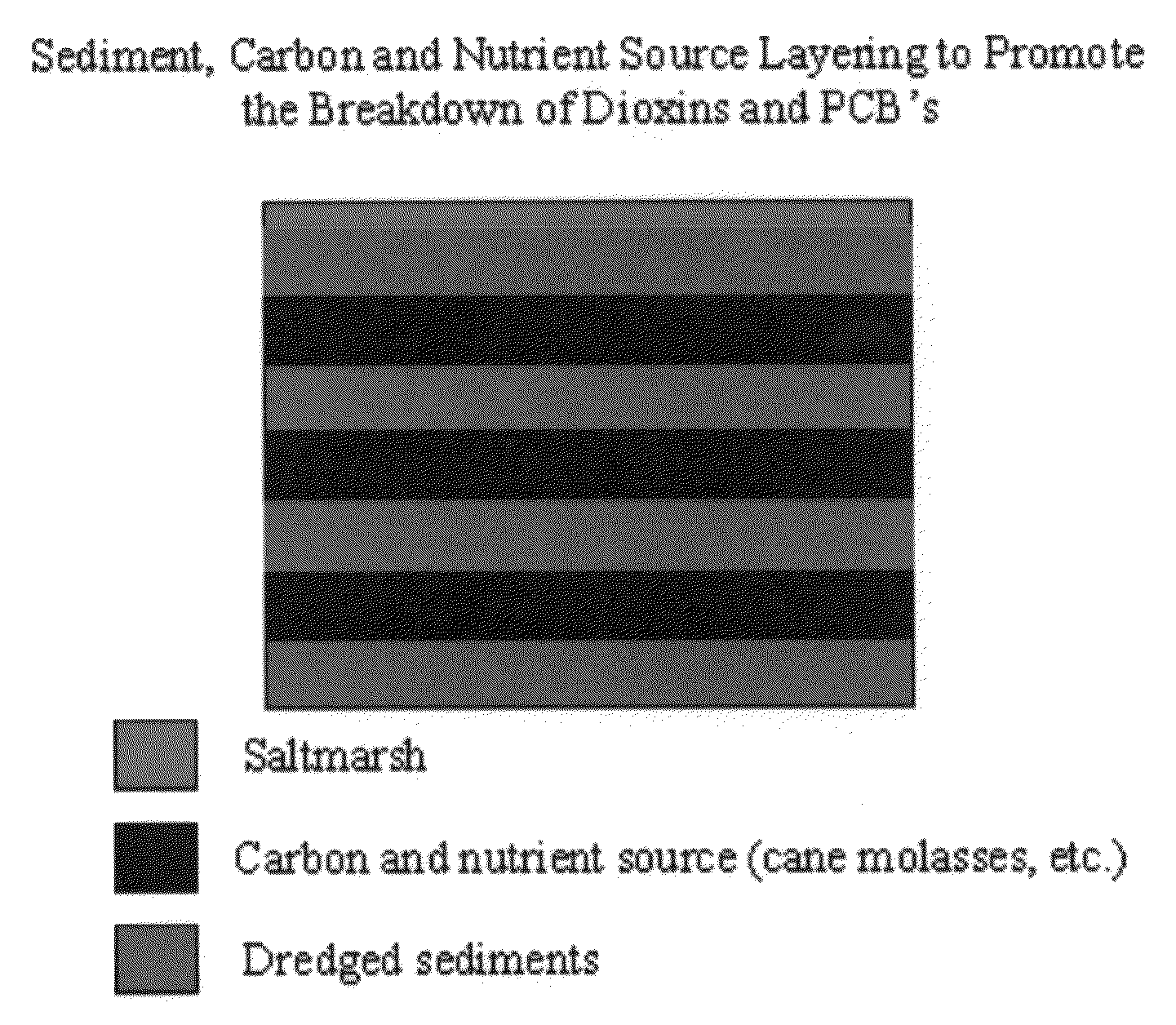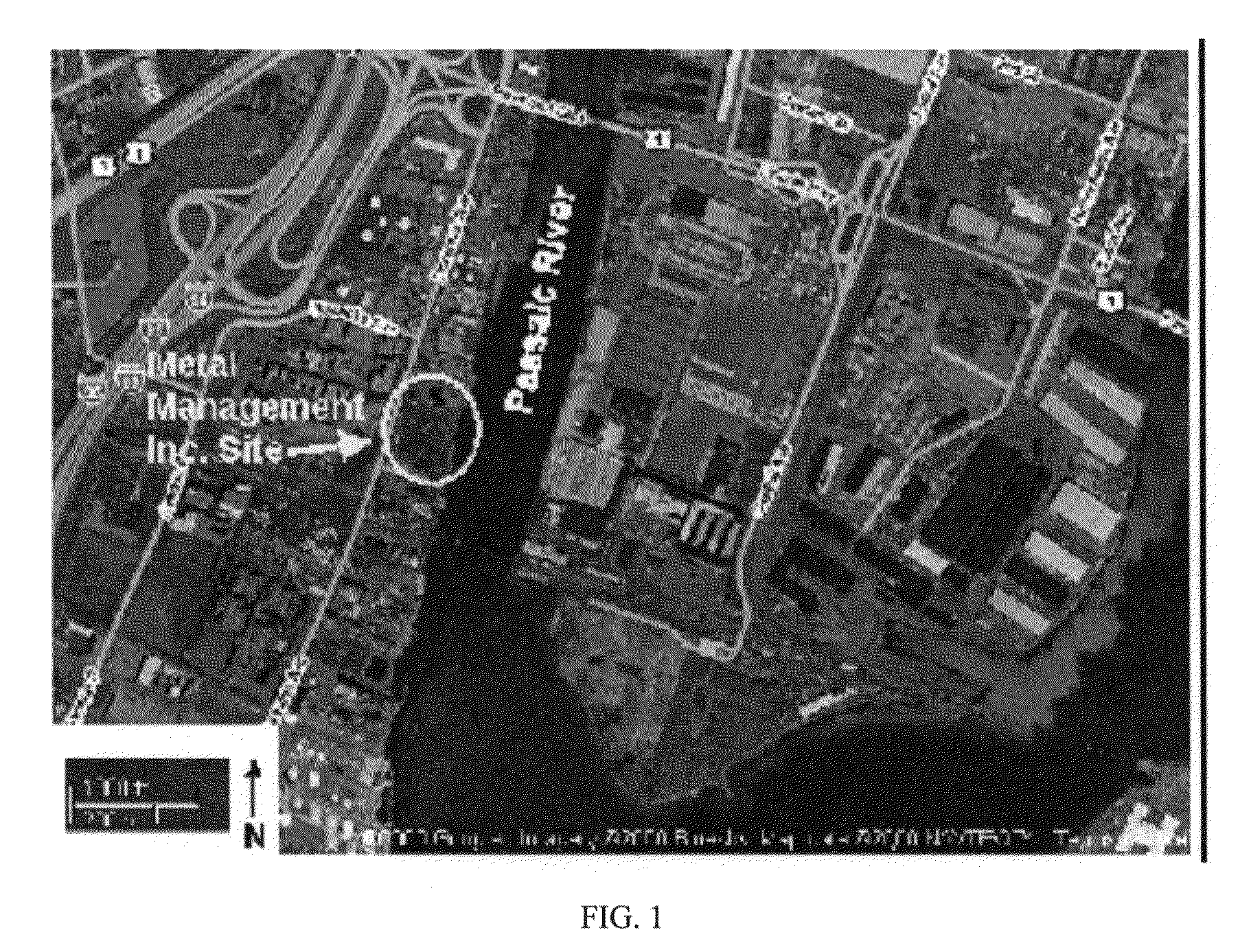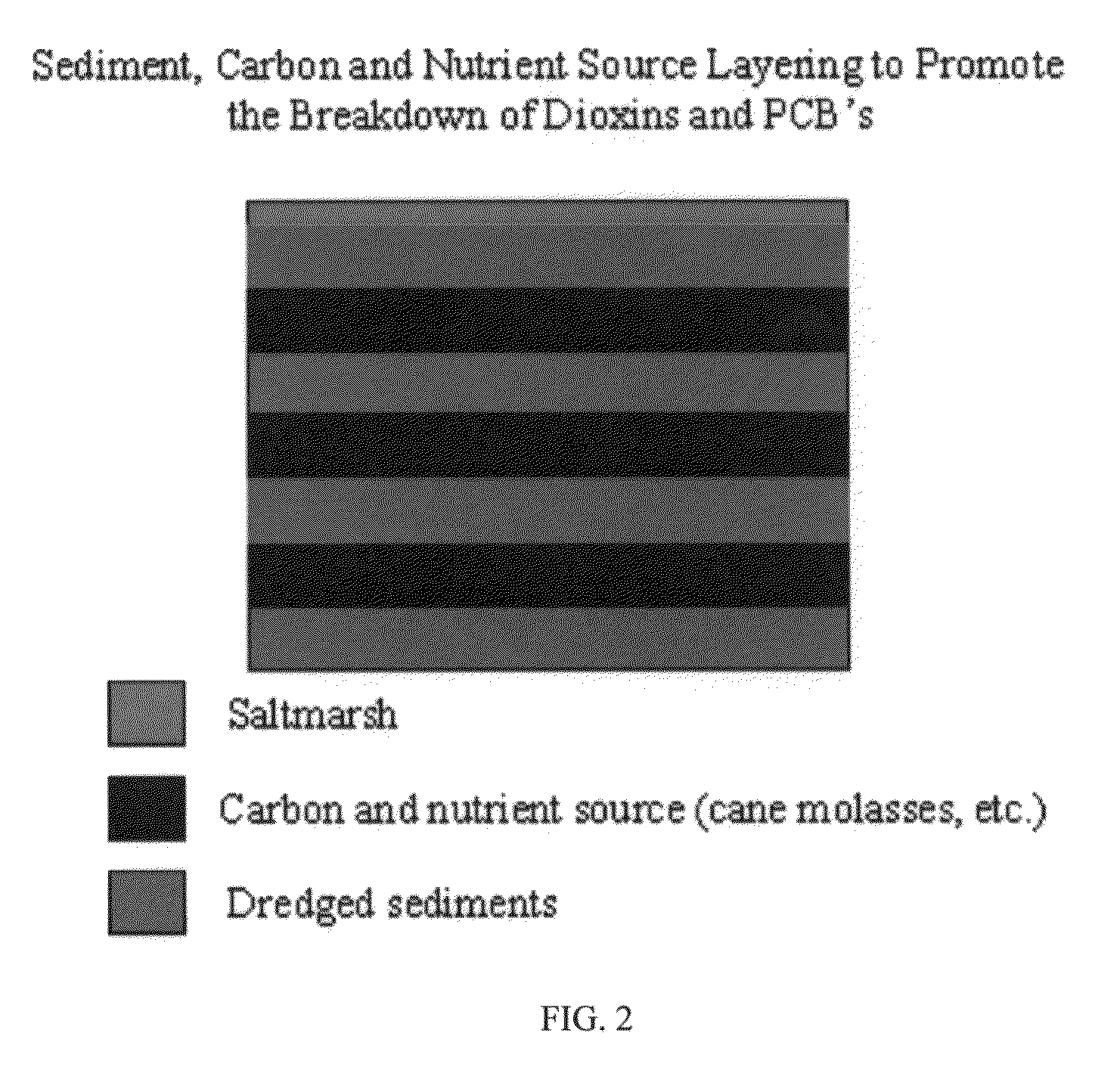Biogeochemical reactor
a biogeochemical and reactor technology, applied in biological water/sewage treatment, water cleaning, chemistry apparatus and processes, etc., can solve the problems of widespread contamination of water column sediments and water columns, destroying the very properties, and reducing the inhibitory effect of dioxin dechlorination/degradation, so as to promote the sequestration of metals, enhance dioxin dechlorination and degradation, and minimize the inhibitory effect of dioxin dechlorination/
- Summary
- Abstract
- Description
- Claims
- Application Information
AI Technical Summary
Benefits of technology
Problems solved by technology
Method used
Image
Examples
example 1
Treatment of Contaminated Sediments in the Passaic River
[0174]Metal Management, Inc. (hereinafter “MM”) is located in Newark on the Passaic River, across from Kearny Point, where the Hackensack River joins the Passaic River to create Newark Bay, a natural estuary. While MM is not a responsible party for contaminants in the estuary, MM like other similarly situated industries, is constrained in its efforts to dredge and improve transportation infrastructure (e.g. shipping docks, bridges, roadways) because of unsafe levels of dioxin contamination in the sediments of the river and shoreline. FIG. 1 shows the location of the MM site. The site is optimally situated in proximity to roadway infrastructure and, potentially, in a place well suited for connecting roadway and water-based transport. Such improvements, however, would require dredging and pier construction. The widespread presence of contaminated sediments in the Passaic, however, presents an ongoing environmental threat as resus...
PUM
| Property | Measurement | Unit |
|---|---|---|
| temperature | aaaaa | aaaaa |
| molecular weight | aaaaa | aaaaa |
| pH | aaaaa | aaaaa |
Abstract
Description
Claims
Application Information
 Login to View More
Login to View More - R&D
- Intellectual Property
- Life Sciences
- Materials
- Tech Scout
- Unparalleled Data Quality
- Higher Quality Content
- 60% Fewer Hallucinations
Browse by: Latest US Patents, China's latest patents, Technical Efficacy Thesaurus, Application Domain, Technology Topic, Popular Technical Reports.
© 2025 PatSnap. All rights reserved.Legal|Privacy policy|Modern Slavery Act Transparency Statement|Sitemap|About US| Contact US: help@patsnap.com



